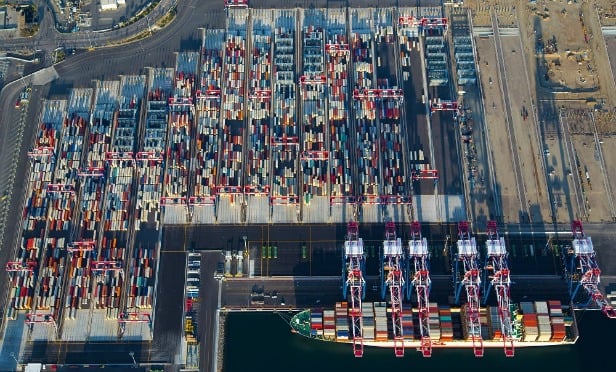 Bridge Development is celebrating a record year. In 2019, the industrial developer added 5.5 million square feet of industrial product to its portfolio in, Los Angeles, Orange County, Inland Empire and San Francisco. The firm delivered 1 million square feet of new product and acquired another 4.5 million square feet for future development.
Bridge Development is celebrating a record year. In 2019, the industrial developer added 5.5 million square feet of industrial product to its portfolio in, Los Angeles, Orange County, Inland Empire and San Francisco. The firm delivered 1 million square feet of new product and acquired another 4.5 million square feet for future development.
"For 2019, we were able to grow our footprint in the markets that we were trying to get into," Greg Woolway, VP of acquisitions and market leader in the Inland Empire and Bay Area at Bridge Development Partners, tells GlobeSt.com. "We had rapid growth in the Bay Area as well as the projects the Inland Empire. We were able to hit on successes early in the year and build on those successes."
The activity in 2019 was essentially the second round of acquisitions for the firm, which opened earlier this cycle. "The L.A. office opened in 2015, and they did a first round of acquisitions totaling 2 million square feet," Kevin Finnegan, director of acquisitions and market leader for the Los Angeles and Orange County markets at Bridge Development Partners, tells GlobeSt.com. "By the time Greg and I joined in 2016, those projects were complete and we were selling the first round of acquisitions. What we have now is the second round of acquisitions, and in 2019, a lot of those projects completed. We were able to have a lot of success of putting together a second round of acquisitions and executing the business plan on those projects."
The industrial market is notoriously tight in California, particularly in Southern California where the firm has a significant portfolio. Bridge has managed to navigate through that competitive field by focusing on challenged sites. "Every acquisition is a unique acquisition to Bridge, whether it is environmentally challenging or requires a creative development strategy. As a result, we were able to unearth some unique sites," says Woolway. Finnegan adds, "We have been able to be successful in our markets by taking on those projects that have a lot of complexity. Each of our projects has some unique trait or issue that we were able to solve on that others weren't. That has been a bog part of the success of our company."
By focusing on location, Bridge has also build a diverse portfolio, with small and big box facilities with a range of amenities and configurations. "All of our sites are location driven first, and then figuring out what makes the most sense in terms of a development plan to both maximize value for our capital partner as well as to be enticing to a tenant or perspective buyer," says Woolway.
While Bridge ha grown its portfolio, its core business strategy has not changed. It continues to build to stabilization and then sells. "We are a merchant-build operation," says Finnegan. "Our projects have to pass our investment committee. We sell these projects, and they have to pass the investment committee of the group buying these projects from us. Having an expertise to solve complicated problems and mature these projects up the institutional ladder to the point that they are able to be sold to large pension finds or investment vehicles."
In 2020, Bridge is hoping to build on the success, and believes the market will continue to support the firm's growth. "We want to continue to grow this pipeline," says Finnegan. "As we look toward our next round of acquisitions, we want to capitalize on the success that we have had and create a pipeline full of institutional projects but bigger and better."
© Touchpoint Markets, All Rights Reserved. Request academic re-use from www.copyright.com. All other uses, submit a request to [email protected]. For more inforrmation visit Asset & Logo Licensing.






